Table of contents
Turmeric or curcuma ( Curcuma longa ), also called turmeric , saffron root or yellow root , is known for its coloring power. This is not only used in cooking, but also for coloring materials such as paper. Turmeric seasons various dishes and is used as a medicinal remedy.
Use in the kitchen
Turmeric (Curcuma) can be used raw or dried and ground (powdered). What does turmeric taste like? As a fresh root, turmeric has a spicy, nutty, resinous, slightly burning taste. Even when dried, the ginger plant tastes mildly spicy and a little bitter. Turmeric is much cheaper than saffron, which also turns yellow, but has a completely different taste.
Ground turmeric is known as a spice in rice, curry, lentil dishes or stews. Turmeric is an essential ingredient in yellow curry powder and is what gives it its color.
Interestingly, turmeric can also be used in sweet dishes, such as Erb-Müesli .
Turmeric is one of the most common spices in Asian and Indian cuisine and is used to enhance many traditional dishes, although the fresh version is more common in Asia. In the traditional growing countries, the sprouts and flowers are also eaten raw, as a vegetable addition or mixed into salads.
Recipe for turmeric paste
This excellent vegan spice paste can be used to spice up various lentil, rice or pasta dishes. It is also suitable for muesli or a smoothie.
You will need: 125 g ground turmeric, 500 ml water , 1 teaspoon ground cinnamon , 2 teaspoons ground ginger , 1 tablespoon coconut oil (or cocoa butter ), 1 teaspoon ground cardamom (or fresh), some ground blackpepper .
Preparation: Mix the water and turmeric well in a saucepan and cook for 5-10 minutes, stirring constantly and on a low heat, until it thickens to form a creamy paste. Then mix in the oil and the remaining spices and stir well again. Once cooled, pour into small, sealable jars. The spice paste will keep in the fridge for 2-3 weeks.
Recipe for vegan turmeric latte
For one cup you need 1 teaspoon of ground turmeric, honey or agave syrup and some freshly grated ginger . Boil the plant milk ( oat , almond or rice drink ) briefly and add the spices. To ensure that the spices mix well with the liquid, a whisk is ideal for stirring. You can also froth the warming turmeric milk with a milk frother to make it even more enjoyable. This "golden milk" is said to have a very stimulating effect.
| Not only vegans or vegetarians should read this: Vegans often eat unhealthily. Avoidable nutritional mistakes . |
Purchasing - Storage
Turmeric can be purchased as a powder in all common supermarket chains such as Coop , Migros , Denner , Volg , Spar , Aldi , Lidl , Rewe , Edeka , Hofer, Billa etc., but as a root mostly only in specialty shops, except in the areas of origin of turmeric.
You can buy organically produced turmeric powder in organic shops, health food stores, online shops and some Asian stores.
Turmeric capsules are also often found as dietary supplements: In order to benefit from all of the positive properties, however, we recommend incorporating 3-5 g of fresh turmeric or the powder into your diet every day.
The availability of turmeric varies depending on the size of the store, catchment area, etc. You can find our recorded food prices for the DA-CH countries above under the ingredient image - and by clicking you can see their development at different suppliers.
Found in the wild
It is questionable whether the plant really grows in the wild. Turmeric has long been cultivated and is more likely to grow wild. The Curcuma plant can be found in the forests of India, Indonesia and southern China. 1
Storage tips
Turmeric powder is very sensitive to light when it comes to preserving important ingredients and aromas. If well sealed and stored in opaque shakers or containers, ground turmeric will last for around two years.
Ingredients - Nutritional values - Calories
Curcuma longa has an energy content of 312 kcal, the majority of which comes from carbohydrates (67%), protein is 9.7% and fat is about 3.2%. 2
Since the daily intake of spices is rather low, the nutrients are also less important. However, the amount of certain elements such as manganese is worth noting. 100 g of turmeric contains 20 mg of manganese. This is much more than in wheat germ (13 mg) or hazelnuts (6 mg), which also have a high content. Saffron and cloves contain much more, at 28 and 60 mg/100g respectively. This essential trace element is very important for the development of human cartilage and connective tissue. 2
The iron content in turmeric is also very high at 55 mg/100g. Green herbs such as dried thyme have a significantly higher value at 123 mg/100g. Iron is very important for the transport of oxygen in the blood and its storage in the cells. 2
Potassium is also well represented in turmeric. 100 g of turmeric has 2,080 mg of potassium, dried herbs such as parsley (2,680 mg) or basil (2,630 mg) even exceed this value. Chili flakes have a similarly high content of 1,870 mg. The need for the essential macronutrient is well covered with a balanced vegan diet. A balanced potassium balance is important for the water regulation of the body's cells. 2
Dried turmeric also contains magnesium , zinc and phosphorus as well as important amino acids. 2
The turmeric rhizome contains, among other things, essential oils with anti-inflammatory effects. The yellowish color is caused by curcumin or its derivatives (curcuminoids), which make up to 5.4% of the rhizome. 28 Other chemical components are demethodycurcumin and bisdemethodycurcumin.
You can find the complete ingredients of eggplant, the coverage of the daily requirement and comparison values with other ingredients in our nutrient tables. In the article Nutrients explained you will get a detailed insight into the topic.
Health effects
Curcumin is the most researched substance in turmeric, but the results are not always clear. Turmeric contains PAINS (Pan-Assay Interference Compounds), which can produce false results in chemical tests. 26
Curcumin modulates a variety of signaling molecules that cover a wide range of effects in the human body and animal models. These include anti-inflammatory, antioxidant, hepatoprotective, chemopreventive, chemotherapeutic, antiproliferative, wound healing and antiparasitic effects. 33 In addition, antibacterial and cholesterol-lowering properties have been demonstrated. 3 According to Brockhaus , turmeric stimulates the production of gastric juice. The sharp, orange-yellow essential oil contained in Curcuma xanthorrhiza has a choleretic effect. 3
Breast cancer studies show that an increase in the tumor suppressor protein p53 reduces the growth of metastases. 4 However, there are also studies that indicate a breakdown of the tumor suppressor protein p53, which in turn suggests a cancer-promoting effect. 5 None of these studies were carried out on human subjects.
Patients with advanced prostate cancer showed anti-cancer activity when treated with curcumin from turmeric, even in hormone-resistant prostate cancer (HRPC). The anti-carcinogenic potential and thus a possible chemopreventive effect in prostate cancer are known in medicine. 6
In familial adenomatous polyposis, the number of polyps decreased by 60% and their size was halved by taking curcumin. 7
The positive effects against cystic fibrosis could only be demonstrated in laboratory tests on mice. 8
Curcumin influences bone metabolism. In mice, for example, it counteracts the loss of bone density caused by estrogen deficiency. It is still unclear whether curcumin promotes bone health in humans. 9,10 Curcumin has been shown to have an anti-inflammatory effect in knee osteoarthritis, where it inhibits the enzymes cyclooxygenase-2, lipoxygenase and NO synthase. 11 It is believed that reducing inflammation could also be part of the anti-cancer effect.
Curcumin has anti-coagulant properties. Turmeric is said to prevent platelets from clumping together and thus blood clots. This is why it is also used as a natural blood thinner. Regular consumption of turmeric can be very useful for people with arteriosclerosis. 12
Is turmeric good for the liver? Curcumin is considered a radical scavenger and is therefore listed in many studies as an effective remedy against oxidative stress. Since this stress can also promote liver disease, among numerous other causes, there are connections here, but there are no clear scientific studies on this. 13 In addition, people with liver disease should avoid too much curcumin; see more in the next section "Dangers - Intolerances - Side Effects".
Since we generally consume very little turmeric and, above all, the bioavailability of curcumin is very low, in vitro studies are difficult to transfer to humans. 14,15 In order to increase the bioavailability of curcumin, studies have shown that it should be combined with piperine, a component ofpepper , although interactions are to be expected here. 16,17 There are also positive studies that show an improvement in the bioavailability of curcumin using dendrosome nanoparticles. 18 According to an in vivo study, curcumin reduces the neurotoxicity induced by fluoride. 19
Dangers - Intolerances - Side effects
What side effects does turmeric have? For some people with sensitive mucous membranes in the gastrointestinal tract, regular consumption of turmeric can lead to diarrhea, stomach discomfort or mild abdominal cramps.
Turmeric should also be avoided in high doses or as a supplement in cases of severe liver disease, inflammation of the liver or gallbladder, as well as in cases of gallstones.
Since turmeric can inhibit blood clotting, people with hemophilia should consult their doctor before taking it. It can also interact with certain antithrombotic drugs or acetylsalicylic acid.
Use as a medicinal plant
You can read about the effects of curcumin and scientific studies on it in the chapter "Health aspects - effects" above.
How much curcumin is recommended and what quantities of turmeric powder or fresh rhizome does this correspond to?
The curcumin contained in turmeric can modulate several cell signaling pathways and has been used for therapeutic purposes in a variety of scientific studies, with one study using up to 12 grams daily for 3 months. 29
Based on a curcumin content of around 3.14% per 100g in pure turmeric powder 30 or up to 5.4% in fresh rhizome, 28 this would correspond to a daily amount of 380g of powder or 220g of fresh rhizome. However, stomach problems can be expected with such amounts, and the availability of curcumin can be increased by up to 2000% by adding pepper containing the ingredient piperine. 16
Despite the sometimes very high amount of curcumin in various studies 31, the WHO has recommended a daily dose of curcumin of 0-3 mg/kg of body weight since 2013 32 - for a person weighing 60 kg, this corresponds to a maximum of 180 mg = 0.18 g and thus 5.7 g of powder or 3.3 g of fresh rhizome.
It can be assumed that the majority of people tolerate amounts of less than 6 g of curcumin per day well. However, especially with long-term use, one should follow the WHO guidelines (at least at the beginning) and increase the dose according to tolerance and one's own discretion. The University Hospital Freiburg , Germany, has published a very informative and comprehensive paper by Prof. Dr. Sigrun Chrubasik-Hausmann . 27
However, it should be noted that until a complete safety profile is available, excessive consumption should not occur during pregnancy and breastfeeding.
Folk medicine - natural medicine
What is turmeric good for? In addition to scientific studies, there are also some traditional medical uses of turmeric. In Asia, turmeric is considered a medicinal plant. Its healing effects are also praised in folk medicine: turmeric is said to help with liver disorders, rheumatism, diabetic wounds, breathing difficulties, colds and coughs, but also with anorexia and stomach pain. In Indonesia, turmeric is used preventively to strengthen the immune system.
Does turmeric deserve to be called a so-called "superfood"? In any case, turmeric has many health-promoting properties. In general, turmeric has a digestive and flatulence-reducing effect when consumed regularly and has a positive effect on fat digestion. 17
Turmeric has been listed as a herbal medicine in the German Pharmacopoeia ( DAB ) since 1930 as the drug Rhizoma Curcumae Longae. This also includes Javanese turmeric ( Curcuma xanthorrhiza Roxb.).
Ecological footprint - animal welfare
Carboncloud , an information platform for the global warming potential of food, has calculated the CO 2 footprint of three different turmeric powder products. The values were 4.05, 4.18 and 5.57 kg CO₂eq/kg. 38 These are relatively high values, comparable to cream or chicken. 41
A cooperation project between Greenpeace , the city of Zurich , Eaternity and others calculated the CO2 footprint depending on the nutrient content. Turmeric powder came to 188 g CO₂/(1/3 of the daily requirement). This makes turmeric powder a very climate-friendly food. 42
Another calculation came up with a global warming potential of about 0.76 kg CO 2 eq/kg turmeric powder. 40 This value is in the upper range compared to other plant-based foods. Comparable to pineapples , avocados or bananas . 41
Turmeric powder seems to be able to be both a climate-friendly and a climate-hostile food. Of course, these values need to be put into perspective, as only a few grams of turmeric are used. Nevertheless, pay attention to the origin of the product, organic certificates and as little packaging as possible in order to achieve a small footprint.
Unfortunately, we could not find any data on the water footprint of turmeric, but we could find data on ginger. Both plants belong to the same botanical family - ginger plants ( Zingiberaceae ). On average, 1657 liters of water are needed to produce 1 kg of ginger. 34 This footprint is comparable to the global average of cherries. The value is higher than the average value of vegetables or fruit, but much smaller than that of tobacco or meat. 34.39
Detailed explanations of various sustainability indicators (such as ecological footprint, CO2 footprint, water footprint) can be found here .
Animal welfare - species protection
Intensive conventional agriculture relies on chemical pesticides. These pollutants are one of the main reasons for the widespread ecological imbalance in the animal and plant world. Avoiding chemically synthetic pesticides promotes biodiversity and our health (keyword: organic farming). 36,37
Worldwide occurrence - cultivation
The origin of turmeric lies in southeast Asia. Today, the turmeric rhizome is cultivated in the tropical regions of South and East Asia, on the West Indian islands 20 and in parts of Africa.
Growing as a potted plant - Harvest
If you like eating turmeric fresh and raw, you can also grow the plant yourself in a pot. Curcuma longa is triploid and is therefore mainly propagated vegetatively, 21 using a piece of organic turmeric root as the starting material. If you leave the root uncovered at room temperature, it will begin to germinate shortly afterwards. You can speed up the process by first placing the root in water at room temperature for 8-12 hours.
When the seedling is a few cm long, you can plant it in a wider pot with potting soil. The seedling should point upwards and protrude slightly from the soil. A partially shaded place at room temperature is ideal. The soil always needs enough moisture, but must not be waterlogged. After 2-3 weeks, a sprout develops. Curcuma forms a false stem and large leaves. The flower is white, pink or purple and the inflorescence is also used as a cut flower due to its long shelf life. In summer, the plant can also be placed outside, provided the temperature does not fall below 15 °C (even at night). In winter, the plant can be left indoors or in a heated conservatory. 22 The plant can reach a height of up to 1 m. 1
After about 9 months, the plant forms new rhizomes. When the flowers and leaves have withered, you can carefully dig up the rootstock, use it and replant part of it, for example. To obtain fine turmeric powder, you must first dry the root and then grind it finely.
The fresh turmeric rhizome can most easily be confused with ginger ( Zingiber officinale ) if the root network is closed. However, if the turmeric root is cut, the intense yellow or reddish color is very different from that of ginger.
Further information
Turmeric ( Curcuma longa or C. domestica ) belongs to the ginger family (Zingiberaceae). In India, the spice and medicinal product has been used for several thousand years.
Alternative names
: Turmeric, saffron root, saffron, saffron root, turmeric, yellow root, yellow root, yellow root, curcuma, curcume, yellow root turmeric, gurkume, gurkumey, tumeric, turmaric, yellow ginger, miller's ginger, Babilonian saffron, Indian saffron. 23
The English name for turmeric is turmeric, it is also known as curcuma, Indian saffron, turmeric rhizome or turmeric root or from the Sanskrit haridra 24 .
Other uses
In addition to its use as a spice, mainly in spice mixtures, Wikipedia also lists its use as a colorant for food (mustard, pasta, rice), paper, ointments and varnishes (protective coating for walls). The traditional fabrics (tais) of the Indonesian island of Timor are still colored with curcuma. Paper colored with curcumin was used in chemistry as an indicator paper for alkalis. The transition point to brown-red is at a pH value of 8.6. The dye curcumin is also used as a reagent for detecting boron. 25
Counterfeiters dilute the expensive saffron (stigmas of the Crocus sativus flower) with turmeric because the coloring is very similar. However, a counterfeit can be checked using caustic soda. Material colored by turmeric appears brown-red when the alkaline lye is added, while pure saffron remains yellow.
Bibliography - 27 Sources
| 1. | Pahlow M. Das grosse Buch der Heilpflanzen. Gesund durch die Heilkräfte der Natur. Nikol: Hamburg. 2013. |
| 2. | USDA United States Department of Agriculture. |
| 3. | Herfurth F, Lenze B. Ganzheitliche Ernährungsberatung: Ein Nachschlagewerk. BoD: Norderstedt. 2014. |
| 4. | Aggarwal BB, Shishodia S et al. Curcumin suppresses the "p........"l-induced nuclear factory-kB pathway in breast cancer cells and inhibits lung metastasis of human breast cancer in nude mice. Clinical Cancer Research. 2005;11(20). |
| 5. | Tsvetkov P, Asher G et al. Inhibition of NAD(P)H: quinone oxidoreductase 1 activity and induction of p53 degradation by the natural phenolic compound curcumin. Proc. Natl. Acad. Sci. USA, 2005, 102(15). |
| 6. | Cheng WL, Huang CY et al. Maspin enhances the anticancer activity of Curcumin in hormone-refractory prostate cancer cells. Anticancer Res. 2018 Feb;38(2):863-870. |
| 7. | Cruz-Correa M, Shoskes DA et al. Combination treatment with curcumin and quercetin of adenomas in familial adenomatous polyposis. Clin Gastroenterol Hepatol. 2006 Aug;4(8). |
| 8. | Egan ME, Pearson M et al. Curcumin, a major constituent of turmeric, corrects cystic fibrosis defects. Science. 2004;304(5670). |
| 9. | Oh S, Kyung T, Choi H. Curcumin inhibits osteoclastogenesis by decreasing receptor activator of nuclear factor-kappaB ligand (RANKL) in bone marrow stromal cells. Mol. Cells. 2008, 26(5). |
| 10. | Kim W, Ke K et al. Curcumin protects against ovariectomy-induced bone loss and decreases osteoclastogenesis. J. Cell. Biochem. 2011. |
| 11. | Madu K, Chanda K, Saji M. Safety and efficacy of Curcuma longa extract in the treatment of painful knee osteoarthritis: a randomized placebo-controlled trial. Inflammopharmacology. 2012, Dez. |
| 12. | Kim DC, Ku SK, Bae JS. Anticoagulant activities of curcumin and its derivate. BMB Rep. 2012;45(4). |
| 13. | Farzaei MH, Zobeiri M et al. Curcumin in Liver Diseases: A Systematic Review of the Cellular Mechanisms of Oxidative Stress and Clinical Perspective. Nutrients. 2018;10(7). |
| 14. | Nelson K, Dahlin J et al.The Essential Medicinal Chemistry of Curcumin. Journal of Medicinal Chemistry. 2017;60(5). |
| 15. | Baker M. Deceptive curcumin offers a cautionary tale for chemists. Spice extract dupes assays and leads some drug hunters astray. Nature. 2017;541(7636). |
| 16. | Shoba G, Joy D et al. Influence of Piperine on the Pharmacokinetics of Curcumin in Animals and Human Volunteers. Planta Med. 1998;64(4). |
| 17. | Prasad S, Tyagi AK, Aggarwal BB. Recent Developments in Delivery, Bioavailability, Absorption, and Metabolism of Curcumin: the Golden Pigment from Golden Spice. Cancer Research and Treatment: Official Journal of Korean Cancer Association. 2014;46(1). |
| 18. | Babaei E, Sadeghizadeh M et al. Dendrosomal curcumin significantly suppresses cancer cell proliferation in vitro and in vivo. Int Immunopharmacol. 2012 Jan;12(1):226-34. |
| 19. | Sharma C, Suhalka P et al. Curcumin attenuates neurotoxicity induced by fluoride: An in vivo evidence. Pharmacognosy Magazine. 2014;10(37). |
| 20. | Rehm S, Espig G. Die Kulturpflanzen der Tropen und Subtropen. Anbau, wirtschaftliche Bedeutung, Verwertung. Eugen Ulmer: Stuttgart. 1976. |
| 21. | Brücher H. Tropische Nutzpflanzen. Ursprung, Evolution und Domestikation. Springer: Berlin, Heidelberg, New York. 1977. |
| 22. | Plantura.garden Kurkuma Profi Tipps zum Anbau der Gelbwurz. |
| 23. | Pritzel GA, Jessen C. Die deutschen Volksnamen der Pflanzen. Neuer Beitrag zum deutschen Sprachschatze. Philipp Cohen: Hannover. Textarchiv - Internet Archive. 1882. |
| 24. | Bown D. Encyclopedia of Herbs & their uses. DK: London. 1996. |
| 25. | Wikipedia Kurkuma |
| 26. | Baell J., Walters M. A. Chemical con artists foil drug discovery. Nature 513, 25 September 2014:481-483. |
| 27. | https://www.uniklinik-freiburg.de /fileadmin/mediapool /08_institute /rechtsmedizin /pdf/Addenda/2016 /Kurkuma_-_Wissenschaftliche _Zusammenfassung_2015.pdf |

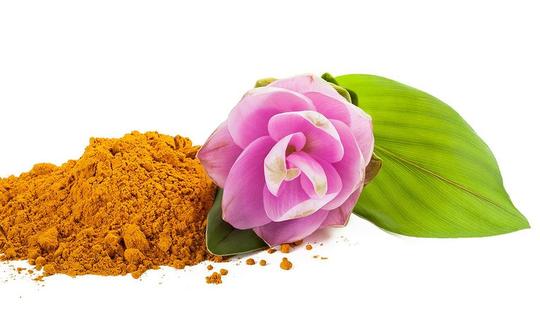

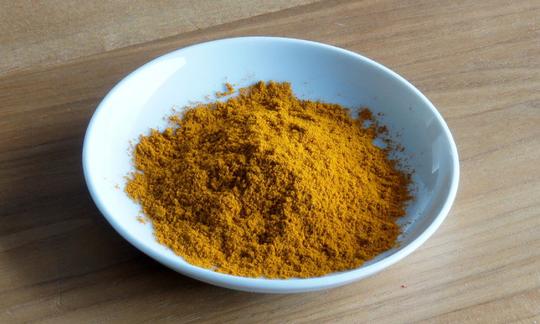

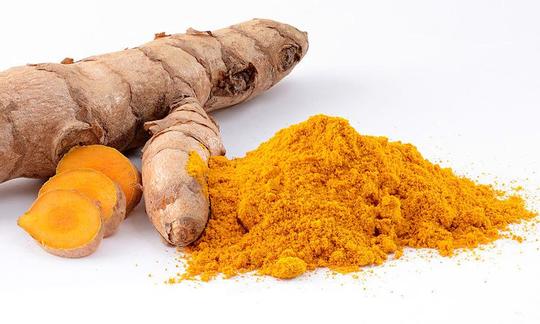

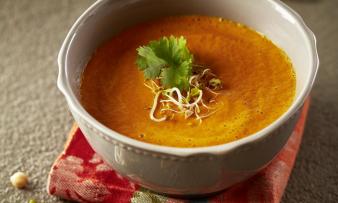
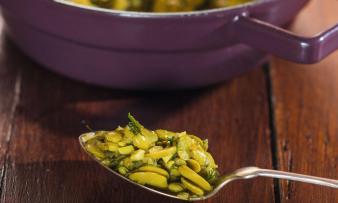
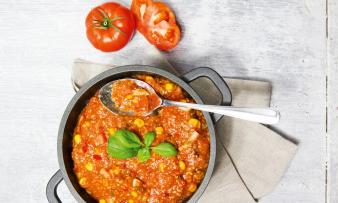





Comments